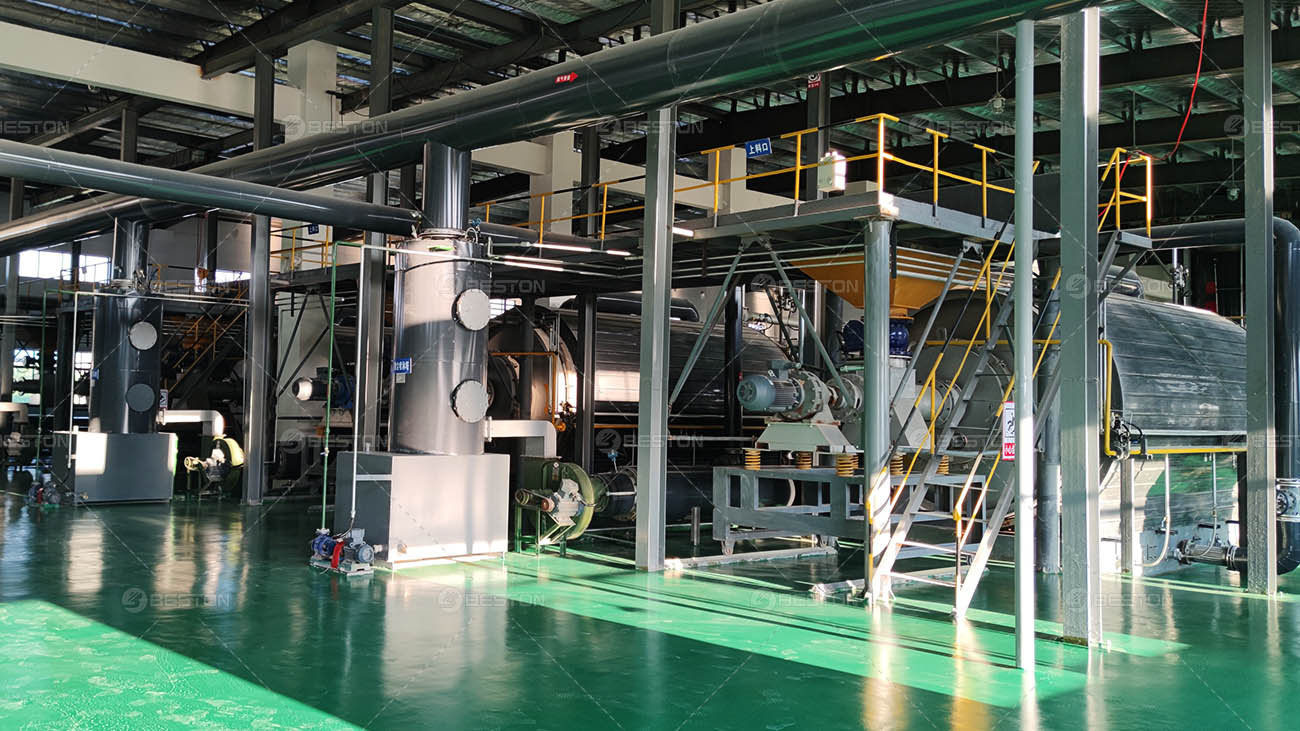From Waste to Resource: Pyrolysis Plant

The escalating challenge of solid waste accumulation has intensified the search for advanced conversion technologies. A pyrolysis plant has emerged as a decisive solution, capable of transforming heterogeneous waste into usable energy carriers and industrial by-products. By utilizing thermochemical decomposition in the absence of oxygen, this process converts polymers and carbonaceous matter into fuel oil, syngas, and carbon black, thereby redefining the waste-to-resource paradigm.
Converting Plastics into Energy
A waste plastic pyrolysis plant addresses one of the most persistent environmental dilemmas—post-consumer plastics. Conventional recycling channels are often constrained by contamination, polymer complexity, and high operational costs. Pyrolysis, however, circumvents these barriers. The breakdown of long-chain hydrocarbon molecules generates liquid fuel with a broad calorific profile, often compatible with industrial burners or generators. The process not only reduces landfill dependency but also offsets crude oil consumption, introducing a more sustainable resource loop.

Tackling Oil Residues
Another significant application lies in processing petroleum residues. An oil sludge pyrolysis plant for sale offers refiners and industrial operators a pathway to extract value from hazardous semi-solid wastes. Oil sludge, typically consisting of hydrocarbons, water, and solid particulates, presents severe disposal challenges. Through pyrolysis, hydrocarbon fractions are recovered, and harmful constituents are neutralized, minimizing ecological risks. The recovered oil can serve as a feedstock for further refining, while the solid char may be repurposed as an additive in construction materials.

Valorizing End-of-Life Tires
The issue of discarded tires is not limited to space consumption but extends to fire hazards and slow degradation. A tire pyrolysis machine provides an industrial-scale remedy by fragmenting vulcanized rubber into usable outputs. Fuel oil recovered from tire decomposition holds significant market demand, particularly in energy-intensive industries. Meanwhile, carbon black derived from the process can be applied in pigment production, reinforcing agents, or as raw material in new rubber formulations. This multifaceted utilization of waste tires exemplifies a closed-loop approach in resource management.
System Efficiency and Environmental Implications
Modern pyrolysis plant is equipped with advanced condensers, catalytic chambers, and emission-control mechanisms. The integration of automated feeding systems and continuous operation modules enhances throughput while reducing manual intervention. Heat recovery systems recycle excess thermal energy, ensuring minimal resource wastage. Importantly, the controlled environment drastically curtails the release of noxious gases, aligning with stringent environmental standards.
A Resource-Centric Perspective
The transformation of waste into high-value resources through a pyrolysis plant highlights a broader industrial shift. Waste materials, previously deemed liabilities, are now being reconceptualized as feedstock. This shift contributes to circular economy objectives, reduces pressure on natural resource extraction, and provides industries with alternative fuel sources. As the global demand for sustainable energy intensifies, pyrolysis technologies stand at the intersection of environmental necessity and economic opportunity.
Conclusion
The pyrolysis pathway redefines waste not as an end-point but as a renewable source of energy and materials. Whether through a waste plastic pyrolysis plant, an oil sludge pyrolysis plant for sale, or a tire pyrolysis machine, the underlying principle remains consistent: reclaiming value from the discarded. In doing so, industries mitigate ecological risks while advancing toward resource efficiency on a global scale.